 Q. There’s a monk seal on the beach and it looks sick – what should I do?
Q. There’s a monk seal on the beach and it looks sick – what should I do?
A. Most seals that haul-out on the shoreline are just fine. They may have mucus around their eyes, scars on their body, and may lie very still, as if they are not breathing, but that’s normal. Please keep your distance; do not try to get close to the animal. Please stay behind any signs or ropes erected by Hawaii Marine Animal Response (HMAR) or other authorized personnel. If there are HMAR, law enforcement or other NOAA-sanctioned personnel on scene (identifiable by uniform or ID), please follow their instructions and recommendations for safe and responsible viewing. Hawaiian monk seals need to be allowed to rest undisturbed. Please report all sightings of monk seals by calling our 24-hour toll-free hotline at 1-888-256-9840.
Q. There’s a whale or dolphin on the beach or swimming in very shallow water – what should I do?
A. Whales and dolphins on the shoreline or swimming in very shallow water (less than 5 feet) are usually sick or injured. Please keep your distance – these animals are very strong, heavy, and unpredictable – and call our 24-hour toll-free hotline at 1-888-256-9840.
Q. I see a marine mammal that’s entangled in string, rope or net – what should I do?
A. Call the 24-hour toll-free hotline at 1-888-256-9840. If it’s safe, please stay nearby the animal to keep track of it until trained responders can arrive. Never try to untangle a marine mammal on your own, without permission and guidance from NOAA. Too many well-meaning people have been seriously injured or drowned while attempting to save an entangled whale, dolphin or seal.
Q. What should I do if I accidentally hook a monk seal while fishing or if I see a hooked seal?
A. Please immediately call our 24-hour toll-free hotline at 1-888-256-9840. You may make your report anonymously. You will then be given guidance over the phone on what to do depending on the situation. Review NOAA’s fisheries interactions guidelines for more information on how to avoid seal interactions.
Q. Why should we protect Hawaiian monk seals? They don’t belong in the main Hawaiian Islands and eat all our fish!
A. Hawaiian monk seals are native to the Hawaiian Islands, and occur nowhere else in the world. See Hawaiian Monk Seal Myths and Facts. There is good archaeological evidence that monk seals were here before the first humans arrived in the Hawaiian Islands. Seals usually feed on bottom-dwelling creatures, such as eels, flatfish, wrasses, octopus, and crustaceans. Seals have never been observed hunting pelagic fish, such as mahi-mahi, ahi, aku, etc. Like sharks and other marine predators, seals play an essential role in our reef ecosystem, maintaining a balance that allows for the highest levels of productivity in our local fisheries.
Q. How close can I get to monk seals?
A. There is no law specifying the minimum distance people can approach a monk seal, however, getting close to these animals may constitute a violation of federal or state law if the animal is disturbed or if your action has the potential to intentionally disturb its natural behavior. If Hawaii Marine Animal Response (HMAR), law enforcement or other NOAA-sanctioned personnel are on scene (identifiable by uniform or ID), please follow their instructions and recommendations for safe and responsible viewing. Please stay behind any signs or ropes that have been erected by HMAR or other authorized personnel. They are there for your safety, to minimize animal interaction and for your awareness. If no signs, ropes or authorized personnel are in the vicinity, it is recommended that you stay at least 50 feet from Hawaiian monk seals and 150 feet if you encounter a mother monk seal with a pup. Pets, especially dogs, can pose a risk to monk seals. Please keep them on a leash when in the presence of monk seals to avoid injury or disease transmission for both seals and pets. In the ocean, monk seals may exhibit inquisitive behavior. Approaching or attempting to play or swim with them may alter their behavior and their ability to fend for themselves in the wild. If you encounter a seal while fishing, take a short break or change locations. Fish with a barbless circle hook to minimize hooking injuries. Enjoy from a distance and use binoculars and telephoto lenses to get the best views without disturbing the seals.
